Thinking creatively and collectively about reparative futures
By Marisa Raya
I came to be a scholar of land reparations after working most of my life in the public sector, leading data-based analysis of racialized urban displacement and regional disparities, and engaging with diverse communities to develop anti-gentrification programs. Often, I worked with governments and public stakeholder committees to set equity targets we were not able to meet: ambitious goals to close racial wealth gaps and build enough affordable housing to keep families together in place. It is frustrating – embarrassing really – to be a part of a public system that can name a challenge but is inadequate to solve it. Where I live, for every 200 new homes for the homeless, 400 more people lose their housing. At the same time, I love the imagination of the public sector, the willingness to try, and the dream of collective self-determination that motivates public employees, activists, funders and nonprofits to take on wicked challenges.
Some community development solutions do work – maybe a topic for another blog post. But beneath many racial disparities in both urban and rural areas, including access to housing, business ownership, wealth, and health, is unequal access to land and the space for communities to generate and maintain their own sustainable livelihood. I am always amazed by the ways that people carve out spaces for cultural expression in areas that were designed to oppress them. Within a real estate system that favors profit and exploitation, people create coops, vendors markets, self-governed villages, food delivery programs, public ceremonies and festivals and mutual aid. Yet in our first few hundred years as a country, property rights were racialized and denied to Native Americans, African Americans, Mexicans, and Asian Americans through laws such as the Dawes Act, Fugitive Slave Act, Morrill Act, Alien Law act, Barcero program and others. This isn’t the world we live in anymore, but it is the legacy of ownership in our landscape.
As property across the United States gets increasingly expensive, our perception of land as a resource and place where we live is changing. Public investment into the restoration, carbon sequestration, forest management and regenerative agriculture should also seek to correct structural racial discrimination. Our challenge is to find ways to invest in communities who have been historically discriminated against without opening lawsuits charging, ironically, privilege based on race. To me, public scholarship means investigating how our collective relationship to land and the environment is changing at this pivotal moment. If earlier eras saw land given away in the Homestead Act and mortgages made accessible through the Federal Homes Administration, how could sustainability investments into land lead to more equitable access? Part of my ambition is to increase our comfort and fluidity in discussing reparations as part of planning and Community Development discourse. When I engage the public in the future, I want policy and program tools and options for reparative futures at the ready.
Image Description: A mother taking a photo of her children on a shoreline has them raise their fists in the air. Photo by Marisa Raya



I am interested in how cultural expression where you are situated is shaped by environmental injustice and land injustice. How does cultural expression as resistance and resilience against look like in response to dispossession? I imagine a closer look at these cultural expression–past and present–will reveal how land reparations discourse has developed over time. You mentioned the Dawes Act, Fugitive Slave Act, Morrill Act, Alien Law Act, and Bracero Program–it would be interesting to see how cultural expression coincided with the racialization of property right and demand for land reparations. Yes, I agree, the challenge is to find ways to invest in communities who have been historically marginalized and oppressed. How can we find ways to get institutions to divest from death and to invest in life-giving resources? You raise many interesting points here, and I look forward to learning more!
Marisa, thank you for this informative and hopeful outline of your past and current work and aspirations. Your path from working in the public sector, where there is far less time let alone space, for ideation around policy, program tools, and options for reparative futures. With this goal in mind, I really understand why you would choose to move into public scholarship and out of the daily struggles for proper funding for social projects and reparations. I also really appreciate how you outline the contradictions of the public sector… the embarrassment but also the deep appreciation, “the willingness to try, and the dream of collective self-determination that motivates public employees, activists, funders, and nonprofits to take on wicked challenges.” It reminds me that governments are not just failing institutions, but places filled with so many people who have hope and care for others, who dedicate their lives to bettering our structures for others. I truly appreciate all this short essay holds and look forward to learning more from and with you!
Thank you, Nathaly and Ant!
Reparations as part of public planning – yes! I love this. I think this blog is almost a year old and I am so curious what you have been able to move this forward? In the Bay there is real opportunities for collaboration to support local people of color at Hummingbird farm and Sagorea Te Land Trust. Moving beyond the analysis of violent realities of property ownership to more just land re-distribution is so necessary.